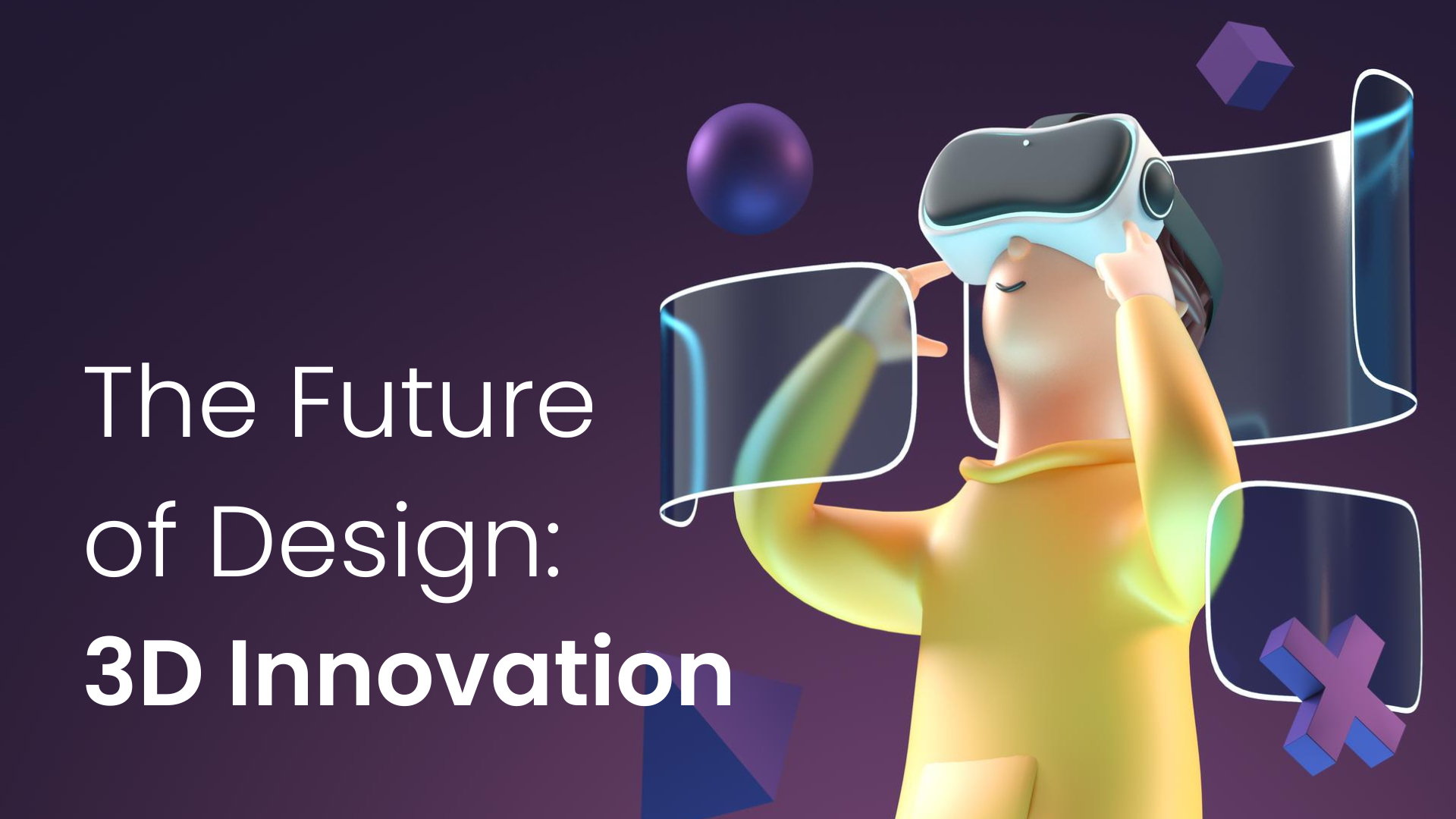In the rapidly evolving world of graphic design, staying ahead of trends is essential for brands aiming to captivate audiences and establish a strong identity. One of the most transformative developments shaping the future of graphic design is the rise of 3D visual innovation. From immersive brand experiences to modern storytelling, 3D design is revolutionizing how brands communicate their identity and engage with their audience.
The Rise of 3D in Graphic Design
Graphic designing has always been about blending creativity with technology, and 3D design is the next natural evolution in this journey. Once reserved for gaming, architecture, and film industries, 3D design is now making its way into mainstream branding and marketing. The increasing accessibility of powerful design software and tools has enabled designers to craft hyper-realistic visuals that capture attention like never before.
Unlike flat, two-dimensional visuals, 3D design introduces depth, texture, and motion, offering a dynamic visual experience that resonates with audiences. Brands are leveraging this technology to craft visually striking content that stands out in the saturated digital space. From product renders to interactive web experiences, 3D design is no longer a luxury but a necessity for forward-thinking brands.
Why 3D Visuals Matter for Brand Marketing
In the crowded digital marketplace, standing out is more challenging than ever. Brands are turning to 3D visuals to craft unique experiences that capture attention and foster emotional connections.
Immersive Brand Experiences
With technologies like augmented reality (AR) and virtual reality (VR), 3D designs enable brands to create immersive environments where customers can interact with products or services. For example, IKEA’s AR app allows users to visualize furniture in their own homes before purchasing—an innovative use of 3D technology that blends functionality with engagement.
Enhanced Storytelling
Modern consumers crave stories that resonate on a personal level. By using 3D elements, brands can craft narratives that feel dynamic and lifelike. For instance, a skincare brand might use hyperrealistic 3D animations to showcase how its products interact with skin at a molecular level, making complex science visually digestible.
Stronger Brand Identity
Consistency in visual branding is key to recognition and trust. Incorporating unique 3D elements into logos, packaging, or advertising campaigns can help brands establish a distinctive identity. Companies like Spotify and Instagram have successfully leveraged geometric shapes and dimensional typography to enhance their brand aesthetics.
Key Applications of 3D Design in Graphic Design
The versatility of 3D design makes it applicable across various industries and mediums:
- Product Visualization: Whether it’s fashion, electronics, or architecture, 3D modeling allows designers to create detailed representations of products before they are manufactured. This not only aids prototyping but also enhances marketing by offering consumers a realistic preview.
- Interactive Advertising: By integrating AR elements into advertisements, brands can turn static visuals into interactive experiences. Imagine scanning a QR code on a billboard to see a product come to life in 3D on your smartphone screen.
- Website and App Design: Dimensional typography and animated elements are increasingly being used in UI/UX design to create engaging digital interfaces. These designs not only look modern but also improve user interaction by guiding attention effectively.
The Role of Technology in Driving Innovation
The rapid adoption of AI-powered tools has further accelerated the integration of 3D design into mainstream graphic design practices. AI simplifies complex tasks like rendering hyperrealistic textures or generating dynamic animations, saving designers time while expanding creative possibilities. Additionally, advancements in hardware such as GPUs have made rendering faster and more cost-effective.
Emerging technologies like holographic imaging are also making waves. These innovations allow brands to create captivating visuals that transcend traditional screens, offering new ways to engage audiences both digitally and physically.
Challenges and Opportunities
While the potential of 3D design is immense, it does come with challenges:
- Learning Curve: Despite advancements in software accessibility, mastering 3D design still requires significant skill development. However, online tutorials and courses are bridging this gap for aspiring designers.
- Resource Intensity: High-quality 3D rendering demands robust hardware and software investments. Yet, as technology becomes more affordable, this barrier is gradually diminishing.
On the flip side, these challenges present opportunities for brands willing to invest in innovation. By embracing 3D design early on, companies can position themselves as industry leaders and set new benchmarks for creativity.
The Future Outlook
As we move further into the digital age, the role of 3D visual innovation will only grow stronger. The convergence of graphic design with AR/VR technologies promises new dimensions for storytelling and engagement. From creating surreal branding campaigns to designing interactive e-commerce platforms, the possibilities are endless.
For businesses aiming to thrive in this landscape, integrating 3D design into their digital marketing strategies isn’t just an option—it’s a necessity. By leveraging this technology effectively, brands can craft compelling narratives that not only capture attention but also leave lasting impressions.
Conclusion
The future of graphic design lies in embracing innovation—and at its forefront is 3D visual design. As tools become more accessible and consumer expectations continue to rise, adopting this trend will be crucial for brands looking to stay relevant in an ever-evolving market. Makerrace invites you to explore the transformative power of 3D visuals for your brand identity and marketing strategies. Together, let’s shape the future of graphic design—one immersive experience at a time!


